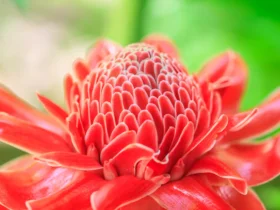In the shadowy depths of humid and mysterious swamplands, a rare and captivating flower reveals itself—the Ghost Orchid (Dendrophylax lindenii). Renowned for its ethereal beauty, elusive nature, and enchanting allure, this enigmatic orchid has fascinated botanists, nature enthusiasts, and explorers for centuries. Let us embark on a journey into the fascinating world of the Ghost Orchid and explore the remarkable qualities that make it a true gem of the orchid kingdom.
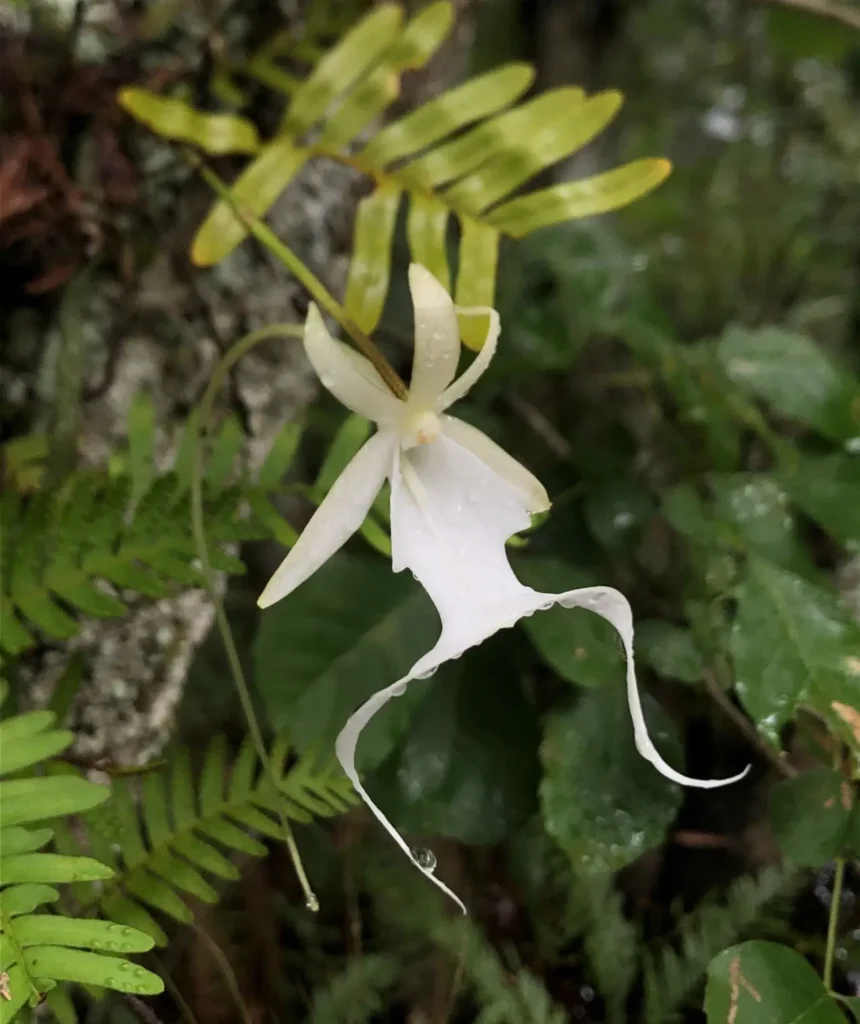
Appearance and Ephemeral Blooms
The Ghost Orchid is a unique and intriguing plant that defies the traditional image of a typical orchid. Unlike most orchids, it lacks leaves and typical green chlorophyll pigmentation. Instead, the Ghost Orchid consists of slender, elongated roots that cling to the trunks and branches of trees in its natural habitat.
The most captivating aspect of the Ghost Orchid is its delicate blooms. Each flower emerges from a long, green stem and showcases a translucent, white appearance with intricate, thread-like petals and sepals. The blooms have an ethereal quality, as if they float effortlessly in the air. The plant’s name, “Ghost Orchid,” aptly captures the ephemeral and ghostly beauty of its flowers.
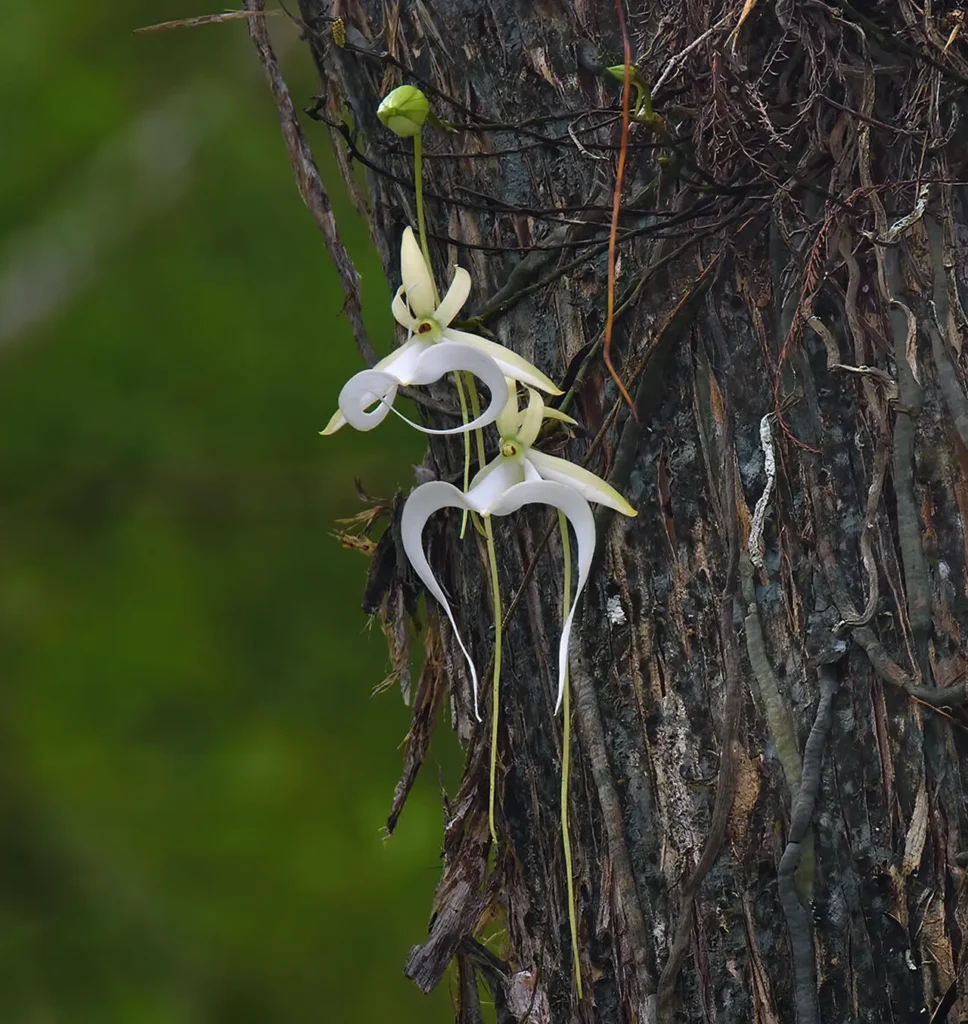
Habitat and Distribution
The Ghost Orchid is native to the humid and shaded swamps of Florida, Cuba, and the Bahamas. It has a specialized habitat preference and is most commonly found growing on the trunks and branches of bald cypress trees (Taxodium distichum) or pond apple trees (Annona glabra). The orchid thrives in the damp, mossy, and low-light conditions provided by these swampy environments.
Due to its specific habitat requirements, the Ghost Orchid has a limited distribution and is considered a rare and vulnerable species. Its scarcity and remote habitat have added to its allure and mystique, making sightings of this orchid a treasured experience for botanists and orchid enthusiasts.
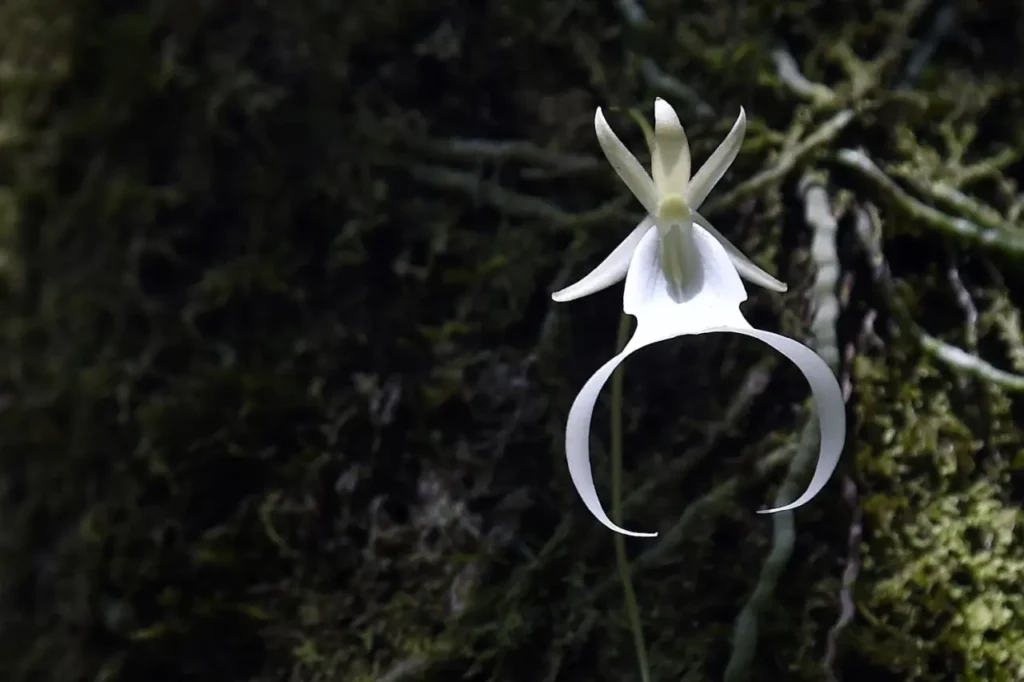
Pollination and Reproduction
The Ghost Orchid’s reproductive strategy is closely tied to its pollinators. The flowers are intricately designed to attract specific nocturnal moth species that serve as its primary pollinators. The blooms emit a subtle, sweet fragrance that lures the moths in search of nectar. As the moths probe the flower for nectar, they inadvertently brush against the reproductive structures, aiding in the orchid’s pollination.
The Ghost Orchid’s reliance on specific moth pollinators and its limited distribution contribute to its challenges in reproduction and natural propagation. Successful pollination and seed production are rare events, further adding to the mystique and rarity of this captivating orchid.

Conservation and Protection
Due to its delicate nature and limited distribution, the Ghost Orchid is considered a species of conservation concern. Habitat destruction, illegal collection, and climate change pose significant threats to its survival. Efforts to protect and conserve the Ghost Orchid include the establishment of protected areas, habitat restoration, and public education and awareness campaigns.
Additionally, initiatives to propagate Ghost Orchids through tissue culture and specialized horticultural techniques aim to reduce the demand for wild-collected specimens and contribute to their conservation.



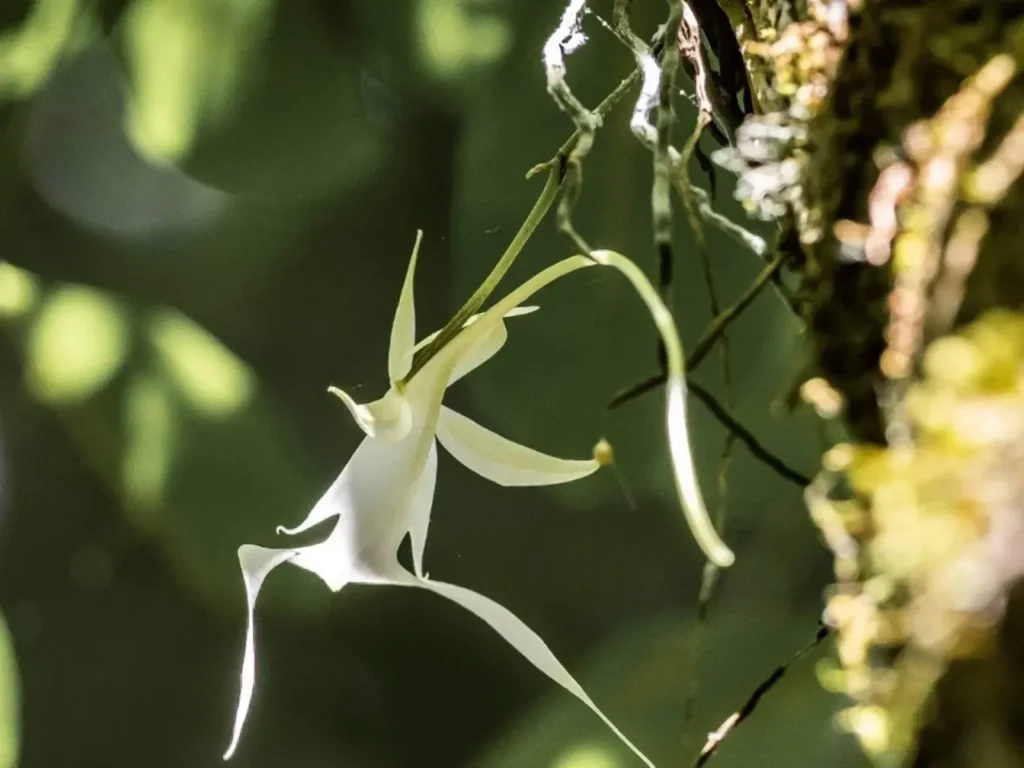
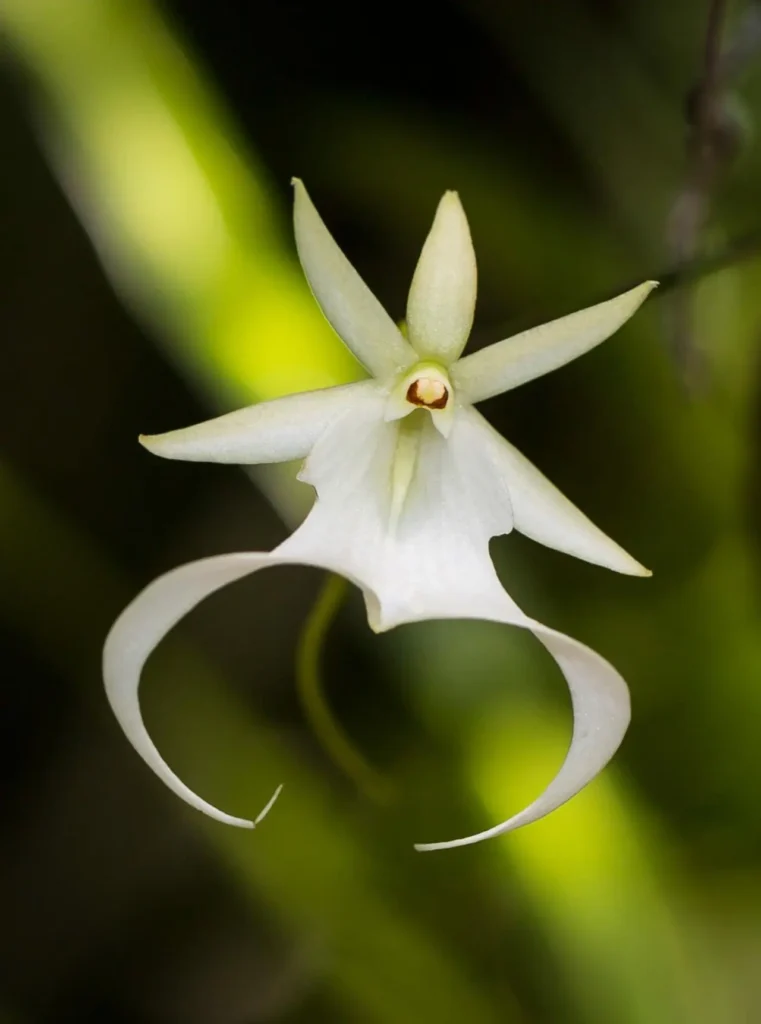
A Haunting Elegance in the Swamplands
The Ghost Orchid embodies a haunting elegance that captures the imagination and ignites a sense of wonder. Its elusive nature, delicate beauty, and captivating allure have made it a legendary presence in the world of orchids. By valuing and protecting the precious habitats where the Ghost Orchid thrives, we can ensure the preservation of this enigmatic species for future generations to appreciate and cherish. May the ethereal presence of the Ghost Orchid continue to inspire awe and reverence for the remarkable diversity found within the orchid world.
